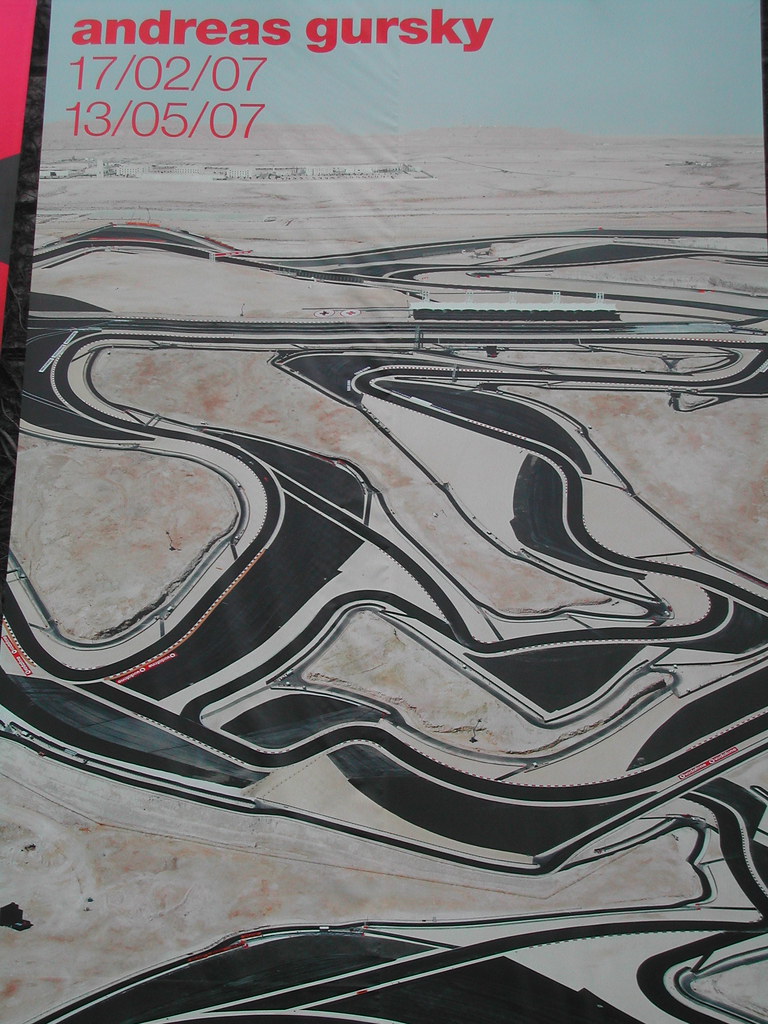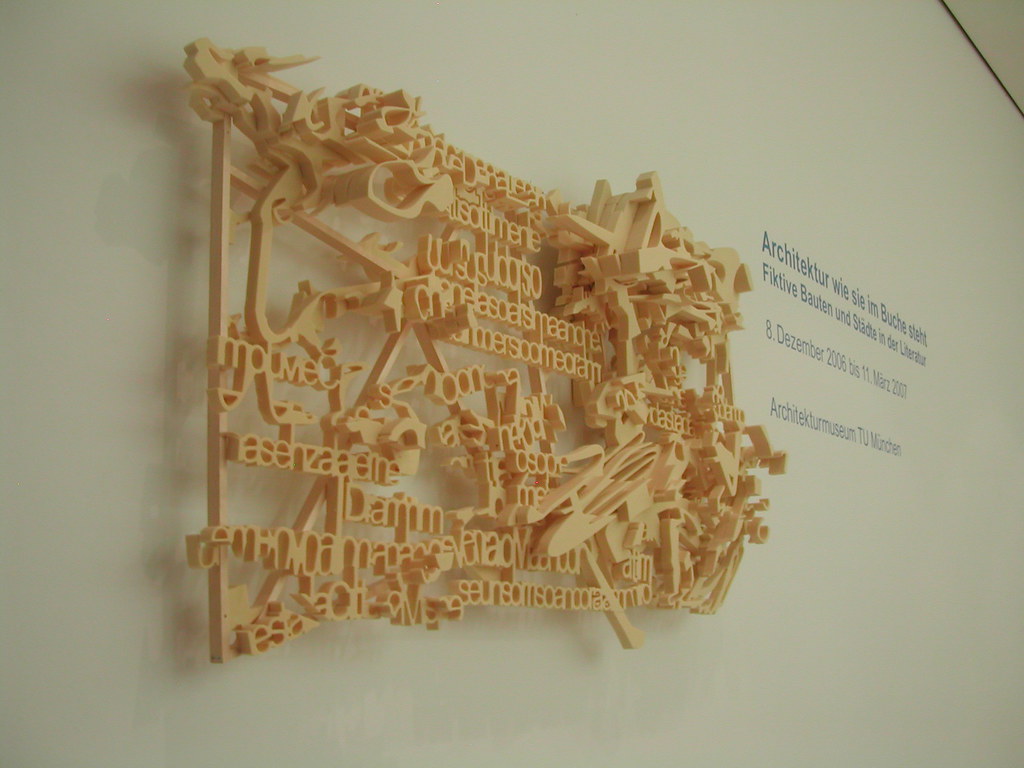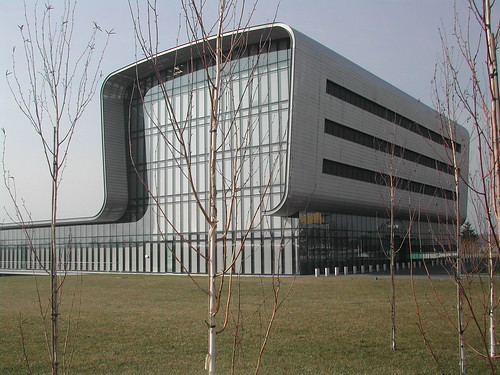
Three weeks ago I visited a friend of mine who works as an intern at BMW, inside the four-cylinder building - right. While there we took some time and visited three exhibitions, two at the Pinakothek der Moderne and one at the Haus der Kunst.
The latter is exhibiting the work of Andreas Gursky, probably one of the most important living photographers, in the first big presentation of his work after the famous show at the MOMA in New York 2001. Gurski's composed and digitally often altered photographs depict profane objects or places sometimes absolutely deserted or cramped with people. His Diptychon of the 99-Cent-Store got auctioned in November 2006 for $2.4M. His ocumentary style is presented on large-scale prints where one can observe some elements of his photograph form a larger structure, like the formula 1 track of Bahrain (pictured above) that looks like a painting rather then a photograph. At the same time you can emerge yourself into the richness of details, like small F1-race cars or the faces of the actors in the immense parades in Pyongyang. These images from North Korea of the parades for it's dictator are some of Gursky's most recent work. They do show the orchestrated grand imagery as the result of the (probably forced) obedience of the people that participate at those large parades, but on a second look one recognizes faces. The anonymity fades and you witness single fates of the opressed. Gursky mostly photogrpahs from an hightened place, even helicopter, to create a view that is challenging in it's originality and form.
Andreas Gursky at the "Haus der Kunst", until May 13th, further info.

The second Exhibtion I visited is a retrospective on Dan Flavin (1933-1996), which is the first of it's kind in Germany. Flavin who concentrated himself on developing and creating artistic representation with and on light, became one of the leading figures of modern minimal and conceptual art. The retrospective features 24 of his "monuments for V. Tatlin" and his initial work of the eight "icons", his earliest experiments with artificial light. Another highlight is the reconstruction of a show from 1968 that was exhibited at the gallery of Heiner Friedrich. The "untitled (to you, Heiner, with admiration and affection)" (pictured above) from 1973 on Flavin's barrier subject is dedicated to that gallerist who was a supporter and friend of Flavin. That piece is formed by small modules, adapting itself to the exhibition room and radiate a stark greenish colour. This barrier thematizes the relation of the space of the observer and the observed space, although one might seem immersed into the art, there is still a part one cannot reach to.
This retrospective was organized by the Dia Art Foundation and the National Gallery in Washington DC and Munich is the last stop of a tour through various museums.
Dan Flavin | Retrospective at the "Pinakothek der Moderne", the show is extended until April 8th, further info.

The third exhibition, also at the Pinakothek der Moderne, is unfortunately already over. It was called "Architektur wie sie im Buche steht" (Architecture as it is written in books) and displayed various representations of Architecture in books, comic magazines or fairytales. Some utopian creations of cities from "Wir" by Jewgeni Samjatin to Italo Calvino's cities were interpreted by architecture students in some small models that accopany the exhibition. The image above is the work from Andi Gerber, an architect in Zurich and PhD candidate at the ETH. This model, which was produced along his PhD thesis on textual representation of cities and the city as text, is a layering of such representations along one of his poems merging to a rhizomatic whole.
The catalog, which is rather a book, on the subject is a profound collection of texts reffering to the exhibition and thouroughly extending it. A fine reader that is unfortunately only available in German.







